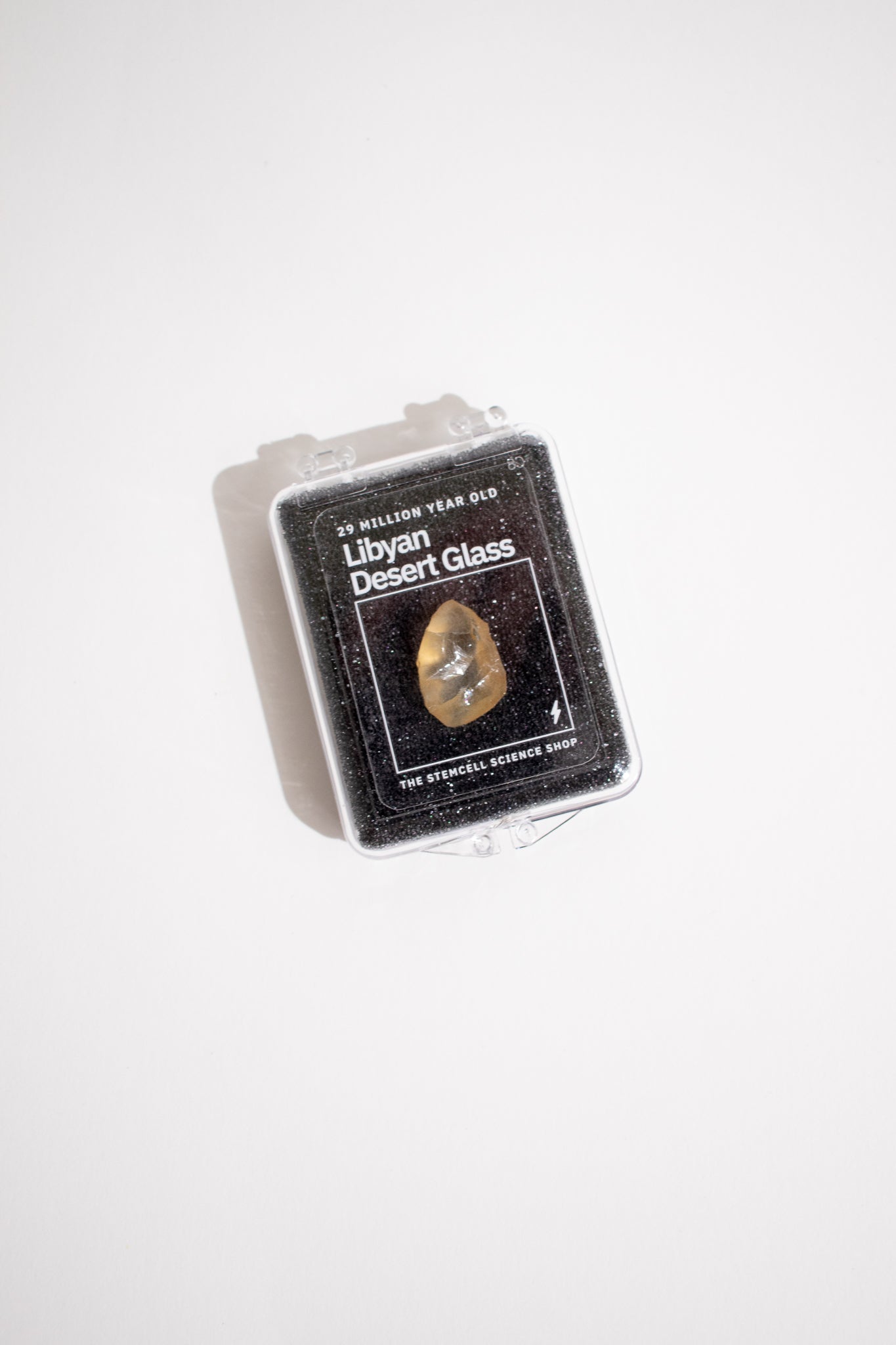Libyan Desert Glass
Libyan Desert Glass
Couldn't load pickup availability
Among the treasures discovered in the tomb of Egyptian King Tutankhamun was an ornate breastplate adorned in gemstones. The centerpiece of the artifact is a large scarab carved out of a luminous yellow stone, now known as Libyan Desert Glass. The glass was the result of a meteorite impact that occurred nearly 29 million years before King Tut died.
The impact in the Libyan Desert, located in the northeast region of the Sahara Desert, would have created a large crater, ejected debris for miles, and sent shockwaves through the ground. The intense heat and pressure was hot enough to melt the surrounding quartz sand at around 3,000 °F, creating this natural glass that is now scattered for miles.
The resulting bright yellow color of this natural glass is due to the high purity of the silica. Unlike other natural glasses that are full of impurities, Libyan Desert Glass contains over 97% silica. Libyan Desert Glass is still highly valued to this day; just one more example that the ancient Egyptians were ahead of their time.
Details:
Includes a 1—2 g specimen in an acrylic capsule. Photos are representative of typical specimens. Some natural variation in size/shape should be expected.
Shipping rates may vary by product. Please add to cart for more details.











